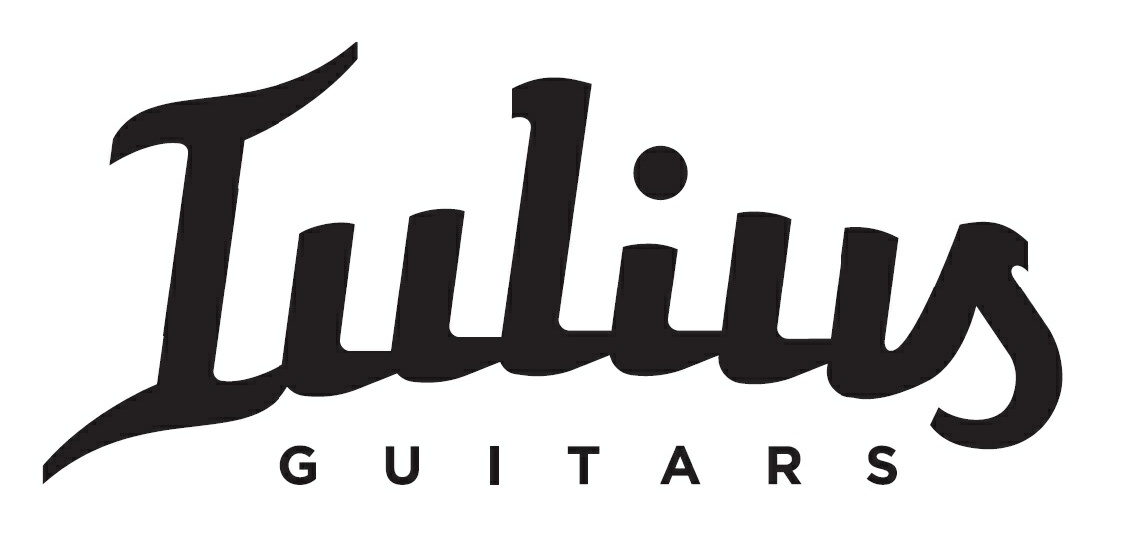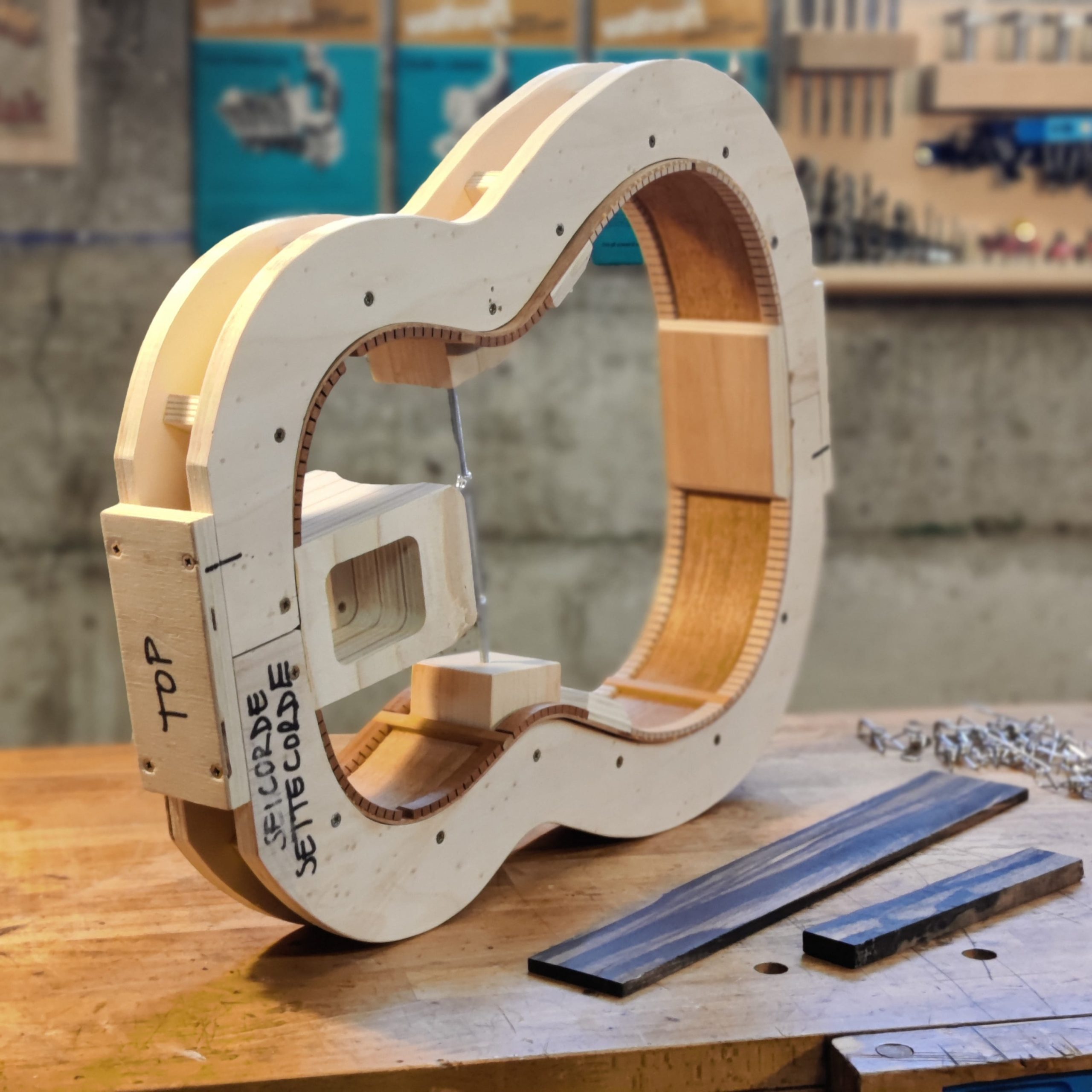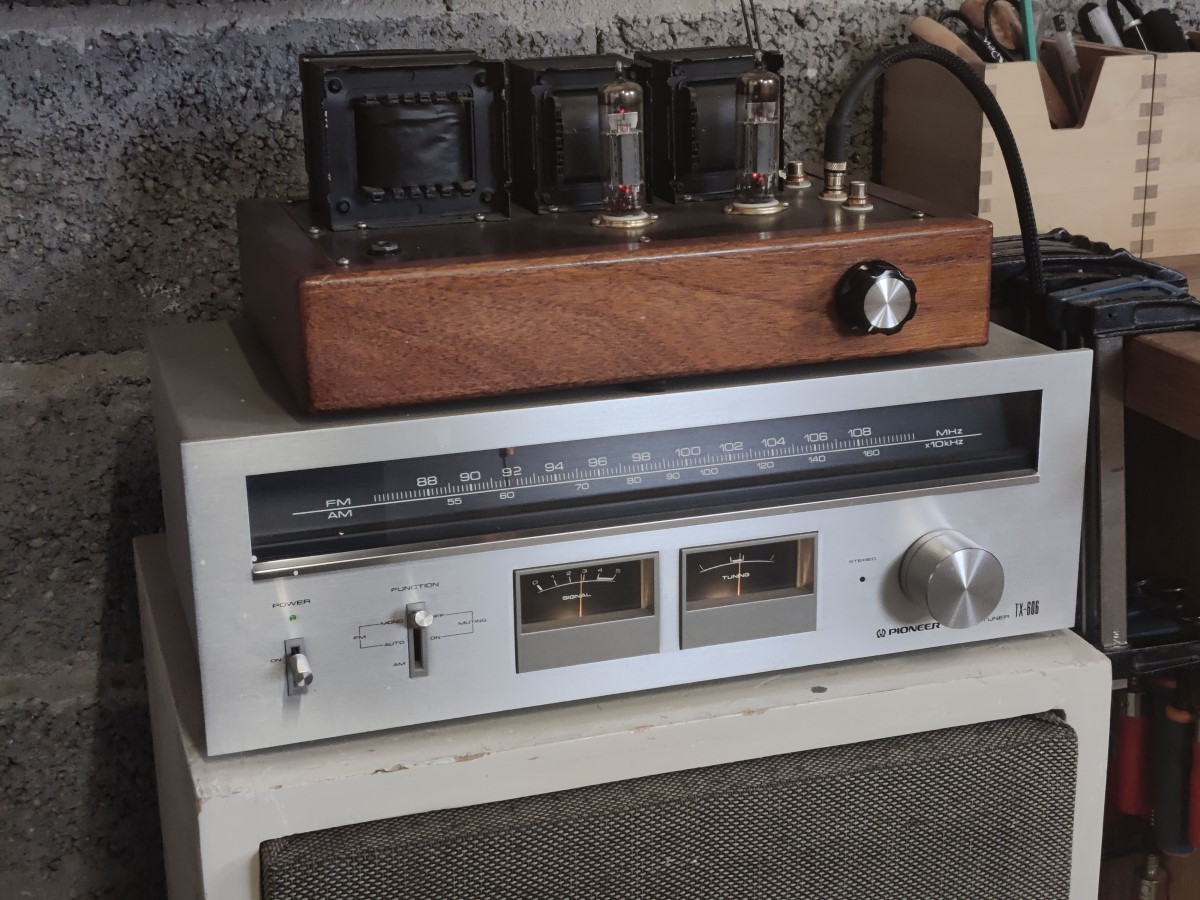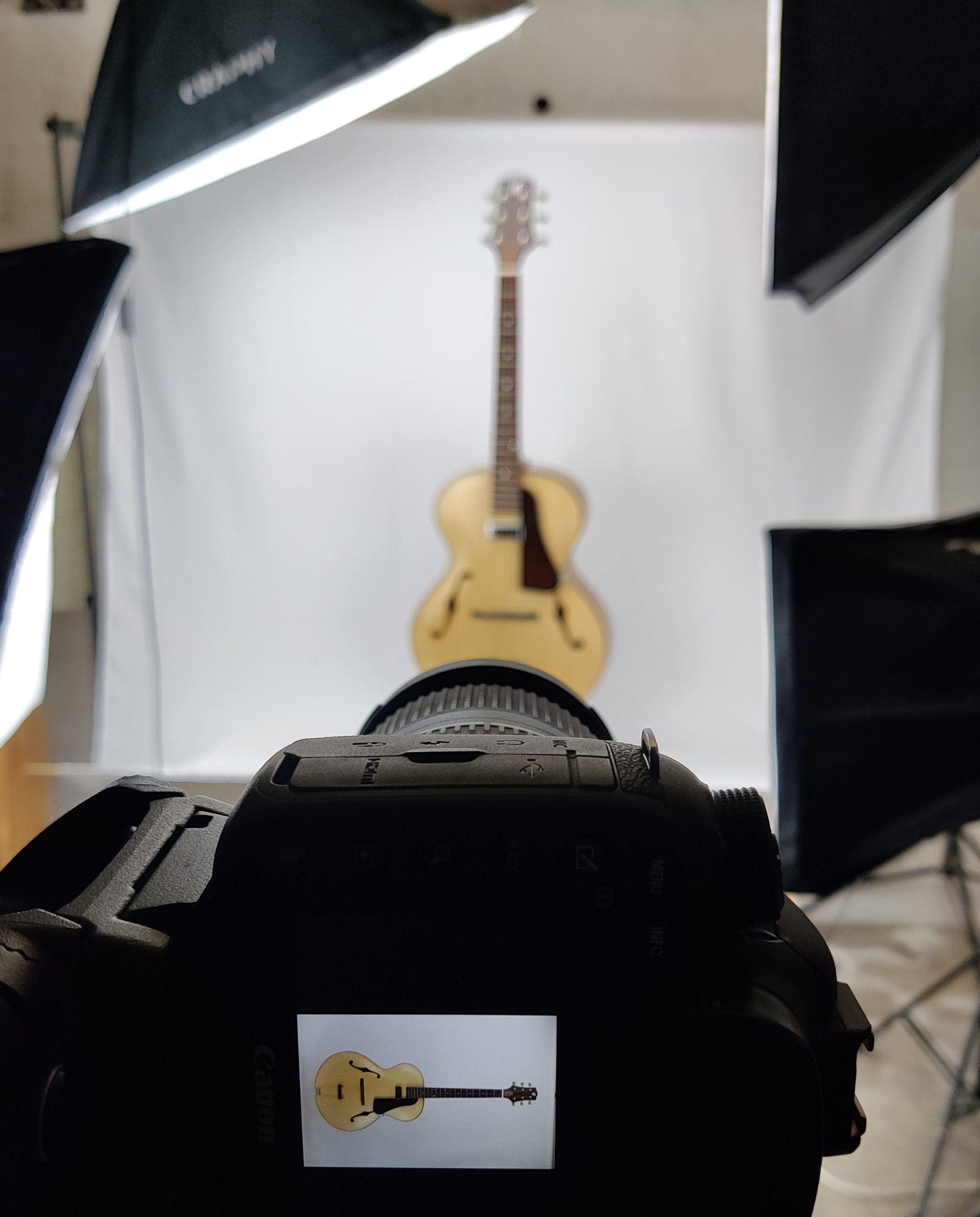
Atelier
L’Atelier de Sorbiers (Loire, France) has been structured over several years, and it’s a work in progress.
The shop organisation is based on a mix of handtools for the most delicate and important jobs, and automation where possible, to profit from the precision of the machines and save useful time.
The CNC machine takes care of all the manufacturing stages where my manual work is not adding any value. Its accuracy ensures reliability and consistency to several parts of my instruments, while keeping labour cost to an acceptable level, and offer an exceptional value for money.
I 3D print in my workshop the very few plastic parts of my instruments such as the support structure of the Hybrid modal preamp or the support of the condenser microphone on the soundboard. I only use bio-based PLA plastic, petrol free, non-toxic.
THE PROCESS
Each stage of the build is carefully mastered and documented using the same proprietary computerised measurement tool developed for R&D purposes. It begins with the assessment of the acoustics and mechanical properties of tonewoods, to select the best materials and adapt them to the required specifications.
The soundboard and the back are then thicknessed to precise requirements and the bracing structure is refined once the plates are glued to the sides, with acoustical measurements that allow to tune the main resonances and the higher modes with the requested accuracy.
Once the box is closed, a second tuning phase is performed, that will bring the resonance modes close enough to frequencies that will be managed later by the tuning of the ETS. External Tuning Slots is a unique feature of Iulius Guitars that allows to keep the instrument in perfect tune and pitch for its whole life, compensating the changes due to aging, humidity and strings gauge.
The HMP preamp is mounted at this stage of the build, and it is also tuned to the instrument that is going to equip, to provide the best sound and maximum efficacity of the antifeedback integrated system;
Each and every guitar that leaves the workshop is accompanied by its individual specification sheet that reports the frequency response as well as the main parameters. This identity card allows the owner to keep track of the instrument’s performances, to always get the best sound and playability out of it.
Attention to quality control and consistency of performances is a habitude I’ve inherited from my experience as an acoustic designer responsible for high volume production design and optimisation, and I take great pride to apply this approach to the craft of my instruments.
BUILDING A GUITAR
A selection of short videos of guitar building, watch more on Iulius Guitars youtube channel.
soundboard bracing
A bit longer than the usual, the whole process of bracing the soundboard of a seven string brasilian guitar.
Music by Pierpaolo Ranieri‘s Wide Open Trio, recorded by myself at Studio dei Castagni
SOUNDboard bending
Preparing the bended soundboard to receive the bracing system. The bend is necessary to let the neck overhang at the upper bout and leave space for an extra comfortable play at higher frets.
Preparing the rim
The new models of Iulius guitars with overhang neck have a complex shape of the soundboard: the lower bout is hemispherical with a 25foot radius, the higher bout is tapered to let the neck free at the top. This requires different 3D printed support, to shape the soundboard, glue the braces and eventually the sides.
building the neck
The first steps to build the neck of a classical guitar: selecting the wood, orienting the grain, squaring the side, then cutting the headstock joint, and the installation of a double action truss-rod.
engraving the logo
Iulius guitars logo, printed out in the workshop with a bio-based PLA filament, engraved in the exotic ebony of the headstock of a seven string Brazilian guitar.
squaring off bracing stock
Preparing the braces stocks for a brasilian seven string guitar, from a quarter sawn billet of Jura’s spruce.
selecting tonewood
The complete process of measurements and selection of tonewood for an acoustic guitar. Preparing the stock, comparing the specific sound with a tap test, measuring the three main modes with impact hammer, deriving the main parameters such as Young’s modulus, density, speed of sound, and eventually the target thickness for an optimal soundboard, lightweight and responsive.
chladni figures
Measuring the Chladni patterns of a rectangular plate with fixed constraint, for a study of FEM modelling of wood mechanical properties, published on the paper “FEM simulations and experimental validation of frequency response prediction for acoustic soundboards”, Institute of Acoustic, 2021.
measuring tonewood mechanical properties
A simple measurement of the first longitudinal mode of a spruce tonewood table. Measuring wood properties helps the selection process and optimisation of soundboard mass and resonant qualities.
MEASURING THE FREQUENCY RESPONSE
Measuring the frequency response of the acoustic guitar with a simple, efficient and economic setup. Read more in Measuring and tuning the performances of the acoustic guitar by Giuliano Nicoletti, Iulius Guitars.














